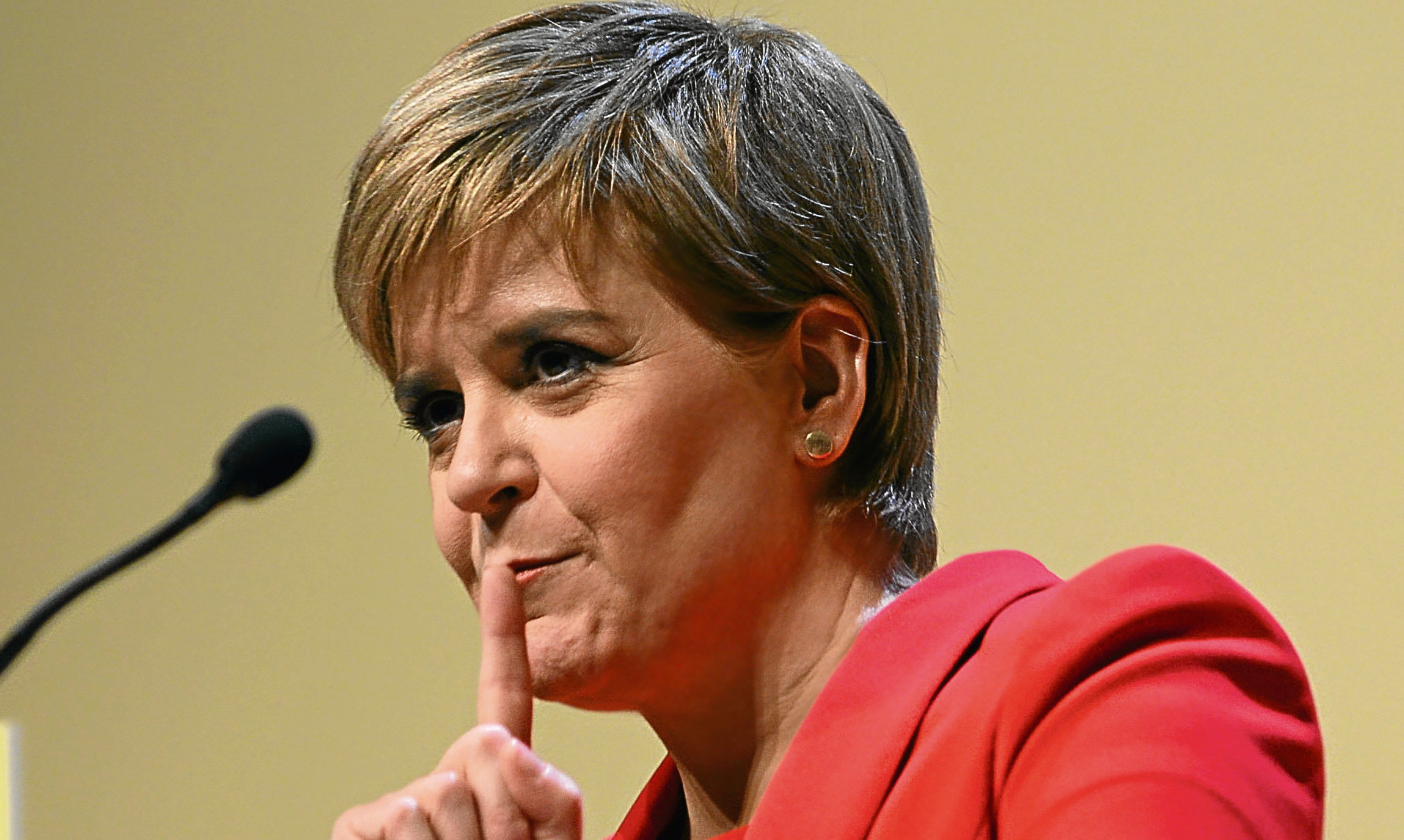The SNP have not had a great election – but that may be about to change. Assuming Theresa May gave any thought to Scotland over the snap vote, it must have looked a good time to call Nicola Sturgeon’s bluff.
The nats had worked themselves into a state of puffed-chest, tail-up pompous outrage about indyref2.
This was appealing to their core vote but boring the rest of the nation.
The week May called the election Sturgeon had been due to announce her next step in a strategy which was patently failing to excite.
An election would be an opportunity for the SNP to put up or shut up.
The reaction was immediate – they shut up.
The “I” word
We got no announcement from the First Minister on her next steps and no mention of independence at all.
This was not a surprise. The SNP push for power at election time and for independence afterwards.
Indyref 1 and 2 are vote losers while defending some vague idea of Scotland plays much better on the doorstep.
The first weeks of the campaign involved the SNP scrubbing any record of Indyref2 from social media while talking about “standing up for Scotland”.
Then came the local elections and the results showed the unionist vote was finally organising itself into a single protest group – the Tories.
If the nats were not talking independence, then Ruth Davidson was and doing very well out of it.
Thus the next phase of the general election was about how many seats might the SNP lose to the Tories.
When this had run its course, the Labour manifesto was leaked, then launched – and proved a crowd pleaser.
Not only were the Tories doing better in Scotland than expected, but now Jeremy Corbyn looked credible.
The only memorable thing about the SNP campaign was a toe-curlingly awkward visit by Sturgeon to Alex Salmond’s constituency in order to show there wasn’t a split between the two on the importance of independence in the election.
Little could they know Theresa May was about to sabotage her own prospects with a radical but Tory-alienating manifesto and U-turn.
Taxing issue
Ironically it was the dementia tax idea that showed May was many things, but not “strong and stable”.
Meanwhile there was a vigorous debate in the SNP leadership team about how to play the independence question.
Angus Robertson, facing a strong challenge in Moray, was anxious that too much independence would lose him his seat.
Sturgeon thought that having talked so much about a referendum, it would look foolish to suddenly downplay it.
Both knew the party was still on course to win lots of seats and this might be the last chance they’d have to press the independence case before popularity dropped entirely.
At times it felt as if the nats would be happiest standing without any policies – their election broadcast of babies being cute in posh houses was so bland it could have been selling rusks.
Then they toyed with being apolitical but useful, like an emergency service
The phrase “protect and serve” popped up, which is also the slogan of the Los Angeles Police Force.
On Tuesday they published their manifesto and managed to resolve some of these issues.
There is a strong pitch for wavering ex-Labour voters to stay in SNP ranks with lots of good socially progressive policies.
The manifesto rally was an extended attack on the Tories, which may yet lose Angus Robertson his seat as it didn’t sound remotely reassuring to right-wing nationalists.
“Utilitarian”
His hope is the staunch defence of the triple lock pension, another target in the Tory manifesto, will be enough to hold on to the pensioner vote.
Broadly the manifesto is consistent with the idea of “utilitarian” nationalism – that independence is a means to build a better society.
That’s a reversal of the wooing of all of Scotland Sturgeon tried in her spring conference speech.
The fact is, many Scots don’t want things to be “better” – they just want to protect what they have – but that doesn’t rally people to vote for you.
Most importantly the referendum strategy was re-jigged into a “choice” for when the Brexit deal is done.
This is simpler, makes sense and sounds more fair than the old plan.
The rally and manifesto tried to downplay independence yet it still dominated the headlines.
If you are an independence party, that’s how it should be.
